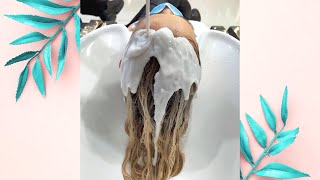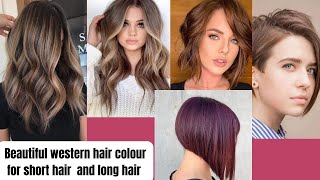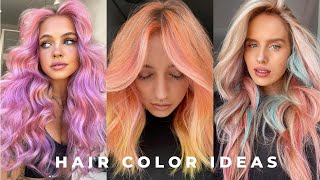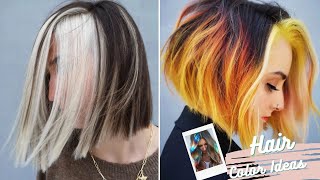The Hair Coloring Lingo You Need To Know If You Want To Avoid Disaster
- Posted on 27 January, 2022
- Hot Topic
- By HB Team

Source: Don Arnold/WireImage/Getty Images & Luca Teuchmann/WireImage/Getty Images
Getting your hair colored is exciting, and if you’re lucky, you’ll walk out with the same ombre style as the pic of J-Lo that you brought in. But miscommunicate what you want (which is why we always recommend bringing a picture), and you risk having your hair, and your day, ruined. Just think about how many times your colorist has baffled you with hair-speak. “We’re going for a half head of babylights and a retouch in the T-section” – it’s like talking Cardi B style to your grandma. So, we asked Dubai’s top award-winning colorist, Maria Dowling, to give us a lesson in salon lingo so you can rock up to your next salon visit sounding like a pro. Here’s what these 10 most common hair terms actually mean – we can’t believe we got ombre so wrong!
Balayage
It may look like your colourist is literally painting a masterpiece on your hair, but Balayage (derived from a French word, meaning to sweep) is a creative technique that allows the hairdresser to place the colour where they feel the hair, and light, will naturally fall – unlike highlights, they don’t use foils. Think Gisele’s ultimate natural sun-kissed waves.
Ombre
This is a gradual change in hair color, starting with darker roots going to lighter ends; not to be confused with the dip-dye trend from a few years back, which had no gradient, just a harsh line differentiating the colors. It’s what I tend to call ‘recession hair color’ because it requires little maintenance and it can be up to six months before you need to reapply! You can make it as bold or subtle as you want.
Break the Base
Also known as smudging, breaking the base helps to lift your base color, dodge the regrowth, and smudge the hairline, so you don’t have as much of a defined line of growth. Ultimately this is a great technique if you’re time poor and need to ‘break the base’ before you fully re-do your color as it’s quick, easy, and relatively inexpensive.
Bronde
A natural progression from ombre, bronde is officially a mix of brown and blonde like ombre, but is broken up with baby lights through the top section. Think J’Lo’s chocolate brown base and honey blonde highlights.
Lowlights
When the color added is darker than your natural color it can add depth, shine, and texture to your hair color if you’re keen to have something a little more multi-hued. Think Jennifer Anniston’s hair which is always full of light and dark accents.
Babylights
While we don’t endorse hair color on babies (!), babylights describe those natural looking fine hair highlights we often see on children’s hair, usually caused by natural sunlight. When we do babylights, we apply fine strands of color around the top area of the hair, creating a natural sun-kissed look.
Partial Highlights
This is where the highlights are placed in a specific area to accentuate a certain part of the hair. Partial highlights can be applied to the front of your hair for example, which gives your hair a sun-kissed look when it’s pulled back off the face.
Toner
If you’ve heard your colorist talking about ‘brassy’ highlights, a toner will help to bring this brassiness down to an ash, golden or beige color after the hair has been bleached. A toner can also be a good, ‘in-between’ treatment for clients who have trouble maintaining those cool blonde tones before their next color. Just take a look at the image below, the image on the left was taken before the toner was applied and the image on the right is once it’s been toned.
T-Section
If you’re looking for something subtle or just a bit of a retouch to an existing color, you can try T-section highlights, which adds a few lighter strands either side of the parting and along the sides. This is the perfect ‘in-between’ solution to brighten and lift your existing color.
Adding warmth
When you’re adding warmth to a color, think about Autumnal tones –like the colors of leaves in the Fall – using subtle reds, coppers, and golden shades. By adding these to your hair color, you’ll create a naturally warm hue that’ll inject shine and depth into your hair.
Check out this post for more helpful tips on coloring your hair.




